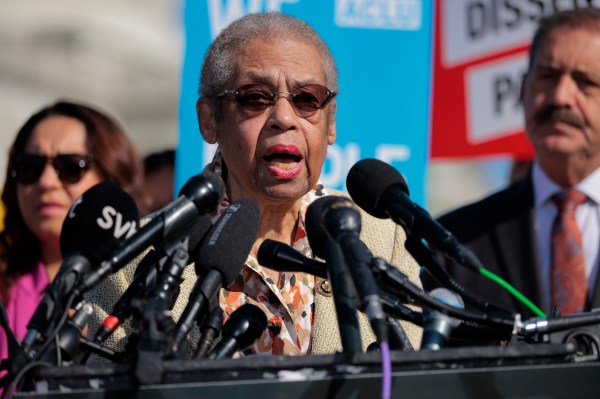Imagine experiencing a workload increase of more than 11,000 percent in the space of one year with no corresponding increase in personnel and no dedicated budget. Thanks to the pandemic, the federal government’s Countermeasures Injury Compensation Program (CICP) finds itself in just such a position. While steps are being taken to address the program’s ability to handle the new realities, the impact is not yet visible to the public.
The CICP was established in 2010 to provide compensation for those injured or killed by health measures administered in response to an epidemic or other threat to national health or security. The program came out of the 2007 Public Readiness and Emergency Preparedness Act (PREP Act) passed in the wake of 9/11 and the subsequent concern about national security threats. The CICP defines a countermeasure as a “vaccination, medication, device, or other item recommended to diagnose, prevent or treat a declared pandemic, epidemic or security threat.” In the past, these have included treatments for Ebola, nerve agents, Zika, and anthrax, among others, and now includes COVID-19.
As of March 1, 2021, the CICP reported that since its inception 11 years earlier, the program had received 551 claims from “individuals who alleged they were injured by covered countermeasures and requested compensation.” As of March 1, 2022, the latest date for which data is available, 7,547 claims had been received, a 1,270 percent increase. A year ago, 62 cases were in the medical review process, a figure that has ballooned to 7,049 at present, an 11,270 percent increase. At this point, fewer than two dozen people are responsible for processing, evaluating, and otherwise administering the claims. According to Christy Choi, deputy director for the Office of Communications of the Health Resources & Services Administration, the CICP “is currently staffed by 20 people who work in a variety of administrative and medical roles.”
The first time the CICP specifically reported COVID-related countermeasures in its monthly data release, July 1, 2021, the program had received 1,165 COVID-19 countermeasure claims. Out of the 1,165, two claims had been resolved, both of which were rejected. Eight months later, out of 7,056 COVID-related claims, resolved claims stand at seven. Six of those resolutions have been denials. The denied claims include one citing use of a ventilator as cause of death. The remaining five all alleged vaccine-related injuries: face spasms and hypertension, allergic reactions, SIRVA (shoulder injury related to vaccine administration), and swelling of the tongue and throat, difficulty speaking/swallowing, and dizziness. All six denials were “because the standard of proof for causation was not met and/or a covered injury was not sustained,” according to the CICP. The one claim deemed eligible for compensation was an anaphylactic reaction to a vaccine. Compensation for that claim, first listed as eligible last October, is still pending due to the required review of eligible expenses. (According to the CICP, the program does not summarize its data by specific trade name or manufacturer.)
While the 7,056 claims cite a variety of COVID countermeasures as alleged factors in harm to patients, such as ventilators, intubation, and drugs such as remdesivir, azithromycin and hydroxychloroquine, more than 4,000 of the claims relate to one of the COVID-19 vaccines. Injuries blamed on vaccines and other countermeasures include Guillain-Barre syndrome, blood clots, myocarditis, allergic reaction, and a host of others, though death is by far the most common. A detailed review of the claims reveals that more than 1,700 do not specify an alleged injury and another 360 do not cite which countermeasure caused the injury, making it likely these claims will be denied without further details and documentation.
While coverage for other routine vaccines is often included in the Vaccine Injury Compensation Program (VICP), a more well known and better funded program, it is unclear if and when COVID-19 vaccines will be added to the VICP. According to the Health and Huma Services website, “"For a category of vaccines to be covered by the VICP, the category of vaccines must be recommended for routine administration to children and/or pregnant women by the Centers for Disease Control and Prevention, subject to an excise tax by federal law, and added to the Vaccine Injury Table by the Secretary of Health and Human Services. This has not been done for any U.S. licensed COVID-19 vaccines, which have not been developed to date." HHS did not respond to an inquiry about plans for the COVID vaccines regarding the Vaccine Injury Compensation Program.
The process of reviewing CICP claims for eligibility is complex and time-consuming as the trickle of revolved cases indicates. Filing a claim requires two forms totalling 10 pages that must be physically mailed to the CICP (no online filing), and documentation from each medical provider involved is also required. Choi says that in response to the recent increase in claims, “the CICP is actively bringing on additional administrative staff and claims reviewers.” When asked how the CICP planned to cope with the huge backlog, Choi did not provide any further information. However, a budget justification document estimating full-time workers in various HHS departments lists two civilian workers (in addition to two military) for “Covered Countermeasures Compensation” in 2020 and 13 civilian workers (in addition to five military) for “Vaccine.” The civilian numbers increase to estimates of 11 and 15 respectively for 2022 (military numbers unchanged.) The figures indicate substantial increases, but still fall far below increases in the department’s workload.
Also new this year for the CICP is direct funding in the federal budget. Funding for the department has historically come through the general HHS budget under the Healthcare Systems Bureau. This year, $5 million is specifically set aside for administration of the CICP and compensation for eligible claims. Since its 2010 inception, the CICP has paid out about $6 million for 30 eligible claims. By way of comparison, the Vaccine Injury Compensation Program budget is $16 million. The real difference, however, is that the VICP Trust Fund is funded through a 75 cents per dose excise tax on covered vaccines, and the current VICP trust fund balance is more than $4.2 billion. Since the VICP program’s inception in 1988, more than 8,300 claims have been declared eligible for compensation totaling approximately $4.6 billion.
While the best information and studies currently indicate that the COVID-19 vaccines are largely safe and effective, no vaccine or countermeasure is completely without risk, which is why the VICP and CICP programs were created. Questions remain about how long COVID-19 inoculations will remain effective and whether periodic booster shots will be necessary and how often they will be needed. Additionally, use of the vaccines for very young children is still not recommended, and the Pfizer vaccine is the only one the CDC recommends for anyone under 18. Given these ongoing concerns, the CICP is likely to be a busy program for years to come. It remains to be seen if the government is providing the necessary resources for the CICP to carry out its mission.






Please note that we at The Dispatch hold ourselves, our work, and our commenters to a higher standard than other places on the internet. We welcome comments that foster genuine debate or discussion—including comments critical of us or our work—but responses that include ad hominem attacks on fellow Dispatch members or are intended to stoke fear and anger may be moderated.
With your membership, you only have the ability to comment on The Morning Dispatch articles. Consider upgrading to join the conversation everywhere.